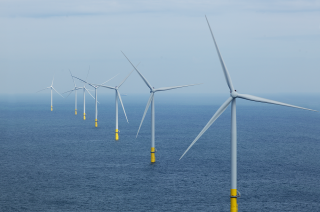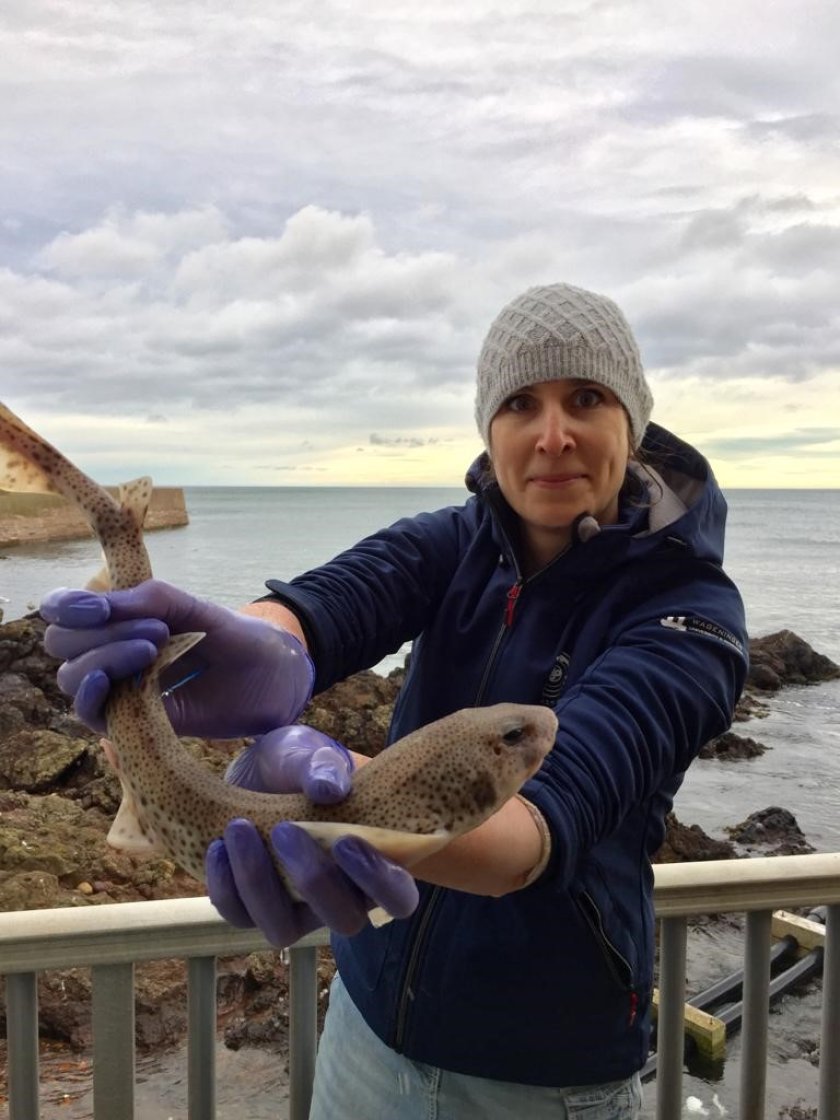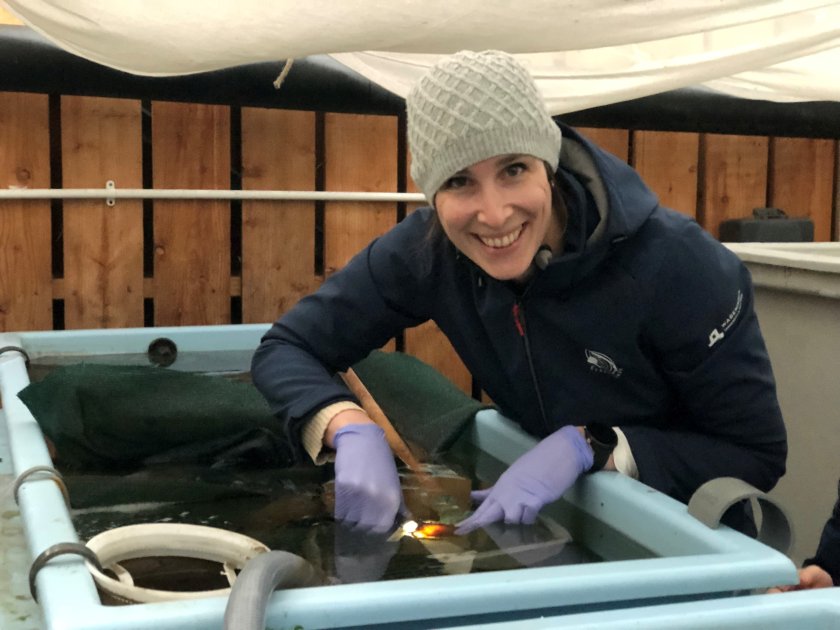
Interview
Electromagnetic fields around wind farm power cables
The North Sea accommodates an increasing number of subsea cables that bring ashore the electricity produced by offshore wind farms. These cables generate electromagnetic fields. How does this affect sharks and other marine animals? Wageningen Marine Research is investigating this, both in the field and with experimental set-ups in a lab.
Annemiek Hermans is a biological oceanographer. She has been working as an environmental engineer for consultancy firms for over a decade. Today she combines this work with a PhD at Wageningen University, in collaboration with Wageningen Marine Research. “I noticed a general lack of knowledge about electromagnetic fields in the context of offshore wind energy”, she says. “Through my research, I hope to help close that gap.”
From previous research using accoustic tags, there are indications that fish might hesitate to cross cables.
There is much societal debate about the impact of terrestrial wind turbines on human health. At sea, there may also be potential effects. The power cables may affect marine life, for instance, but little is known about this issue. This is not surprising, says Hermans: such research is complicated and touches on various disciplines, from physics to electrical engineering and from physiology to ecology. “In addition, this research is quite costly and difficult to conduct at sea”, she says. “But I felt it was an important topic and I was captivated by it.”
Sharks and rays
The impact of electromagnetic fields on animals has been studied before, but the results have been ambiguous. “This is partly because there is no clear standard for how to research this issue”, says Hermans. “Anecdotal observations have been the main source of information. For example, fishermen report that they do catch flatfish on the east side of a cable, but not on the west side. And from previous research using accoustic tags, there are indications that fish might hesitate to cross cables at certain times. These are all signals that something is going on underwater in the vicinity of those cables.”

Sharks and rays can ‘feel’ the cables underwater. “They have tiny organs in their noses, the so-called ampullae of Lorenzini, which allow them to sense electromagnetism”, says Hermans. “They use this ability to navigate, find their prey, and perhaps it plays a role in reproduction as well. That is why there are concerns: are the electromagnetic fields around power cables in the same order of magnitude as the levels used by sharks? And if so, how does this affect ray and shark behaviour?”
Simulations
It is not inconceivable that these electromagnetic fields attract – or repel – sharks and rays. “Or perhaps it temporarily confuses their orientation, due to the alternating current”, Hermans speculates. “There are various different theories about this.”
High time to investigate this issue, thought Hermans, who started her PhD project in 2020. “In the first phase of my research, we measured electromagnetic field strengths at sea”, she says. “We used sensors that are located near the power cables coming from the offshore wind turbines at Borssele. And we are currently preparing lab experiments. There is a lab in Scotland, the St Abbs Marine Station, where we houseforty sharks and rays that were caught in the wild.”
In a 15 meter long basin we will simulate a gradient comparable to those you can actually find in the seabed, and then we’ll do experiments.
The Netherlands Organisation for Applied Scientific Research (TNO) has built a electromagnetic field generator especially for this study, which researchers can use to simulate the situation around an offshore power cable. “Very exciting and complex”, says Hermans. “We can vary the strength and orientation of the field in three dimensions. In a 15 meter long basin we will simulate a gradient comparable to those you can actually find in the seabed, and then we’ll do experiments. For example, we’ll lure the sharks and rays with food to see at which field strength we can observe a change in their behaviour.”
‘Cable streets’
This part of the research will start in the autumn of 2021. Hermans is hesitant to predict the outcomes. “But we do already know that there are electromagnetic fields around the power cables, and that they are within the range that sharks and rays can sense. So I think the concerns are viable.”

Can anything be done to mitigate potential impacts? “You could bury the cables deeper into the seabed”, Hermans replies. “The strength of an electromagnetic field decreases rapidly with increasing distance from the cable. And you could also coordinate cable routes. So instead of spreading them out across the seabed, you could have larger ‘cable streets’ that avoid major migration routes, spawning areas and nurseries for fish.”
Public-private collaboration
Hermans received funding for her PhD research from the Netherlands Organisation for Scientific Research (NWO), within a programme for public-private partnerships. She collaborates not just with researchers from Wageningen University and Marine Research, but also with an energy network operator, a consultancy firm, nature organisations and the Dutch government.
“This is a really nice example of how this kind of research could come about”, notes Hermans. “A nature organisation is concerned about something, the business community says: we want to solve this, an institute says: we know how to do that, and the government invests money and is prepared to adjust its policy to the results. I think this is the research model of the future.”